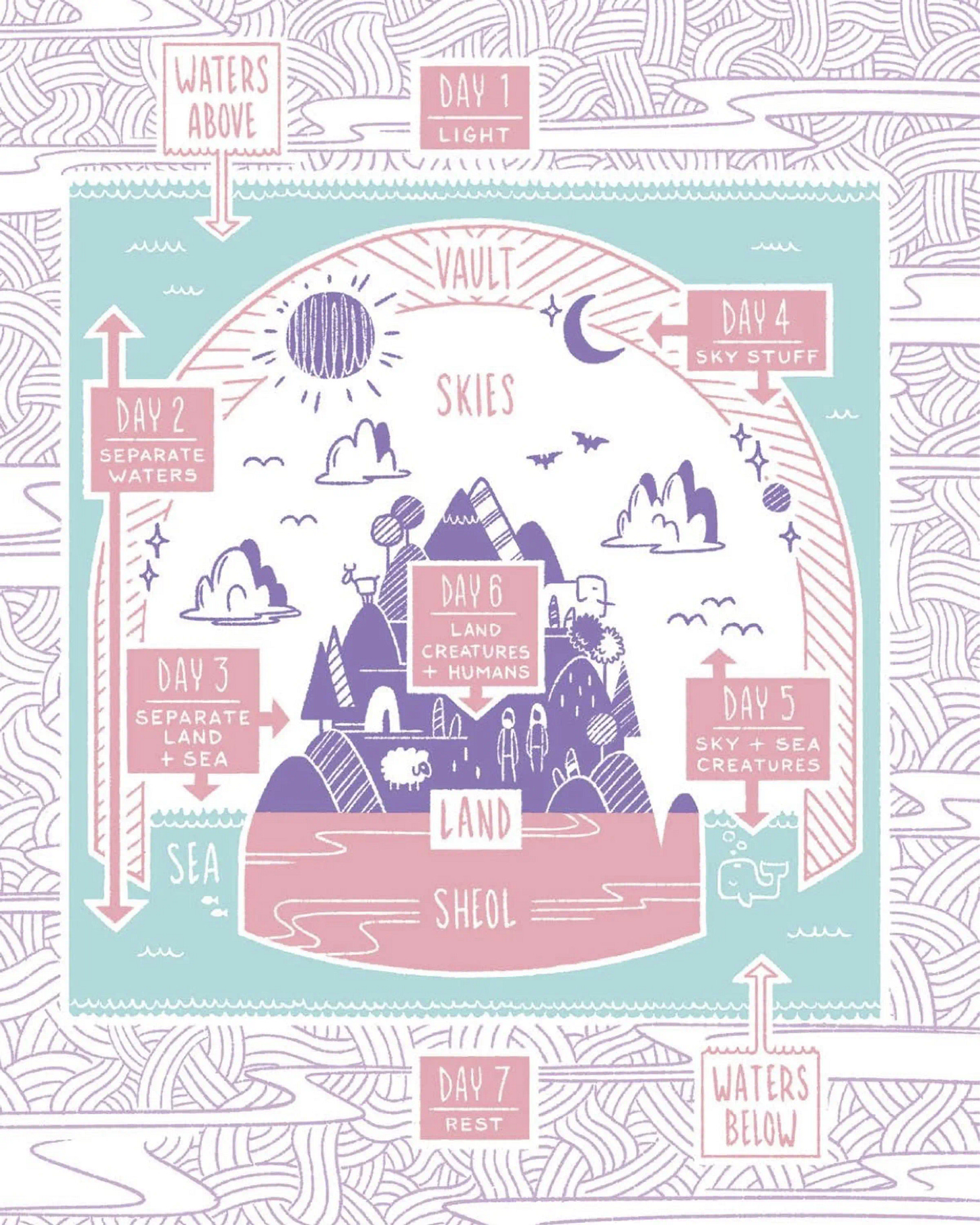Biblical Imagery Starts With Biblical Cosmology
Genesis 1 as a "meaning map" for biblical images
The Bible is full of imagery. It is the not-so-hidden layer on which so much of the meaning in the Bible lives.
Like a tree has its roots in the soil, many of the most important images of the Bible are rooted in biblical cosmology. Cosmology, in this sense, is the way the ancient Hebrew people conceived of the universe as it is unfolded in Genesis 1 and 2. The first two chapters of the Bible reveal a “cross-section” of the earth and the heavens that can help orient us to the Bible’s key images and symbols. If the Bible is a map and biblical images are the features on the map, the cross-section is the legend.
It looks a lot like this illustration (from BibleProject.com):
Ok. So what do we do with this illustration and the ideas it represents? How does it help orient us to the things happening in the Bible on the image level?
First, let’s walk through the illustration.
You have what looks like a floating mountain island beneath a sky dome. You also have labels showing how each piece of the floating island connects to things that happen on a certain day of creation in Genesis 1. The illustration very helpfully tells the story of how God entered the chaos of uncreation (the dark sea of Genesis 1:1) and imposed order, creating a safe place above the water (the mountain) and populating the newly-ordered world with creatures who are now able to live and flourish.
In a sense, the whole first chapter of the Bible is snap-together biblical cosmology, with each day adding one piece of the dense bundle of images God is laying out. It isn’t meant to be a “literal” map of the cosmos, but a “meaning map” that acts as a framework by which all the other meanings in the Bible are supported and aligned.
Later biblical writers were shaped by the same densely-packed images and, in turn, incorporated (and expanded upon) them in their own works. So God is often called a rock (the mountain), images of death and danger often involve water (a return to the sea of chaos), and high places are often holy places, just to cite a few quick examples.
Later on, when Jesus calls his people a “city on a hill,” he is drawing on the image of the holy mountain. (Matthew 5:14) When Paul likens the church to a garden, he is drawing on Eden imagery. (1 Corinthians 3:6–9) When Jesus calls himself a vine, he is also calling himself the Tree of Life. (John 15) Remember when the disciples are afraid when Jesus calms the storm? It is also a “Genesis 1 moment” as God once again calms the Sea of Chaos with his words. (Mark 4) It is the same reason there is a river flowing from the temple in the New Jerusalem but no sea. (Revelation 21 and 22) It all hearkens back to Genesis 1 and 2 and the ancient Hebrew cosmology laid out there.
In these posts, we are going to slowly walk through all of those images and more, passage by passage as we explore the meaning God wrote into the Bible on the image-level, but first we need to get a bit more of a grounding in biblical cosmology.




